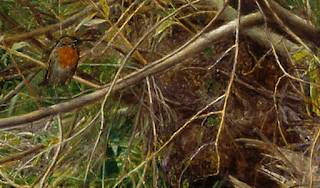Object in Focus: John Everett Millais's 'Ophelia' (1851-52)
The Pre-Raphaelite painter John Everett Millais (1829-1896) is well-known today for his depiction of Ophelia, from Shakespeare's Hamlet, at the moment of her drowning. It hangs in Tate Britain, London, and attracts visitors from all over the world. When it was exhibited at the Royal Academy in London in 1852, however, there were mixed opinions. Some reviewers admired its colours, relishing in every detail of the plants and flowers. Millais was particularly successful in rendering realistic plants, to the point that they were seen as botanical studies, because he followed John Ruskin's dictum "to reject nothing, select nothing, and scorn nothing". In other words, depict nature in painstaking detail.
In 1851, Millais set out to the Hogsmill River and drew inspiration from the water banks. Employing Elizabeth Siddal, an artist in her own right, as model, he had her lie in a bathtub full of water in full dress and corset. The corset, tight tightly around Siddal's waist, creates a dip in the midriff as Ophelia floats through the stream, a supposedly realistic approach on Millais's part to emulate the body sinking into water. One issue, however, was that Millais did not pay enough attention to his model; indeed, Siddal lay in the bathtub so long that the water grew cold and she developed pneumonia, nearly dying of it. So much for realism...
In the accompanying exhibition catalogue at the Royal Academy, Millais entered his painting as Ophelia, with the following passage:
"There on the pendant bought her coronet weeds
Clamb'ring to hang, an envious sliver broke;
When down her weedy trophies and herself
Fell in the weeping brook. Her clothes spread wide
And mermaid like, awhile they bore her up;
As one incapable of her own distress,
Or like a creature native and indued
Unto that element; but long it could not be,
Till that her garments, heavy with their drink,
Pull'd the poor wretch from her melodious lay
To muddy death." - Hamlet, act IV
Millais's attention to detail was unsurpassed and we can even find the 'coronet weeds', the 'weedy trophies'. If we look at the original Shakespeare, we can find more leads:
"There is a willow grows askant the brook,
That shows his hoar leaves in the glassy stream.
Therewith fantastic garlands did she make
Of crowflowers, nettles, daisies, and long purples
That liberal shepherds give a grosser name,
But our cold maids do dead-men's-fingers call them." - Hamlet, act IV
All these plants are present in Millais's work: nettles, daisies, long purples, a willow. It even goes beyond mere representation and enters the realm of botanical symbolism. Ophelia holds sprigs of flowers in her drifting hand, including this white flower, which is most likely the asphodel, a flower associated with death.
On her midriff float poppies and daisies, the daisy signifying innocence and the poppy, once again, signifying death. Flowers abound, but there is even a small robin visible in the upper left, which were seen in the 19th century as harbingers of death.



Comments
Post a Comment